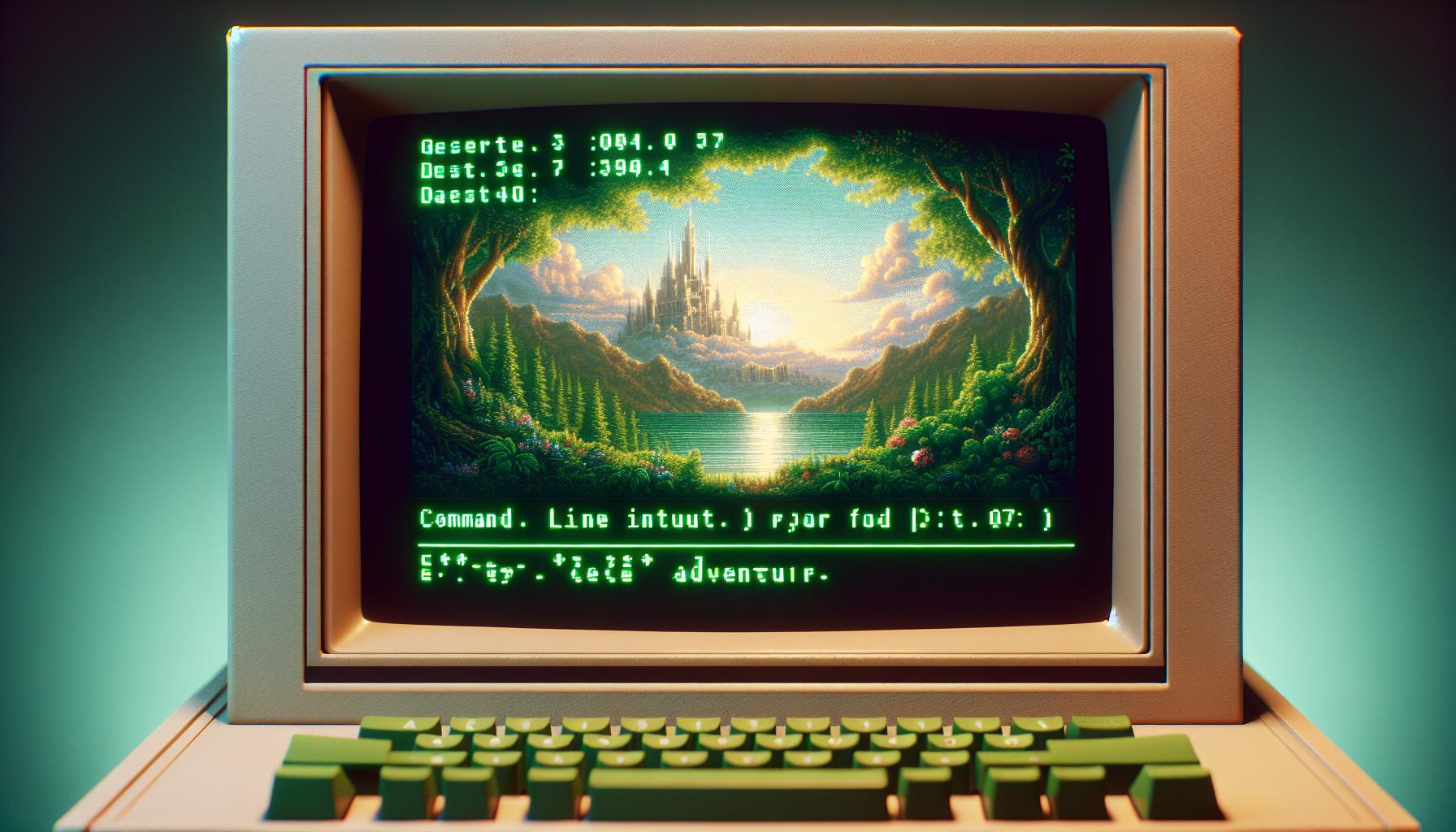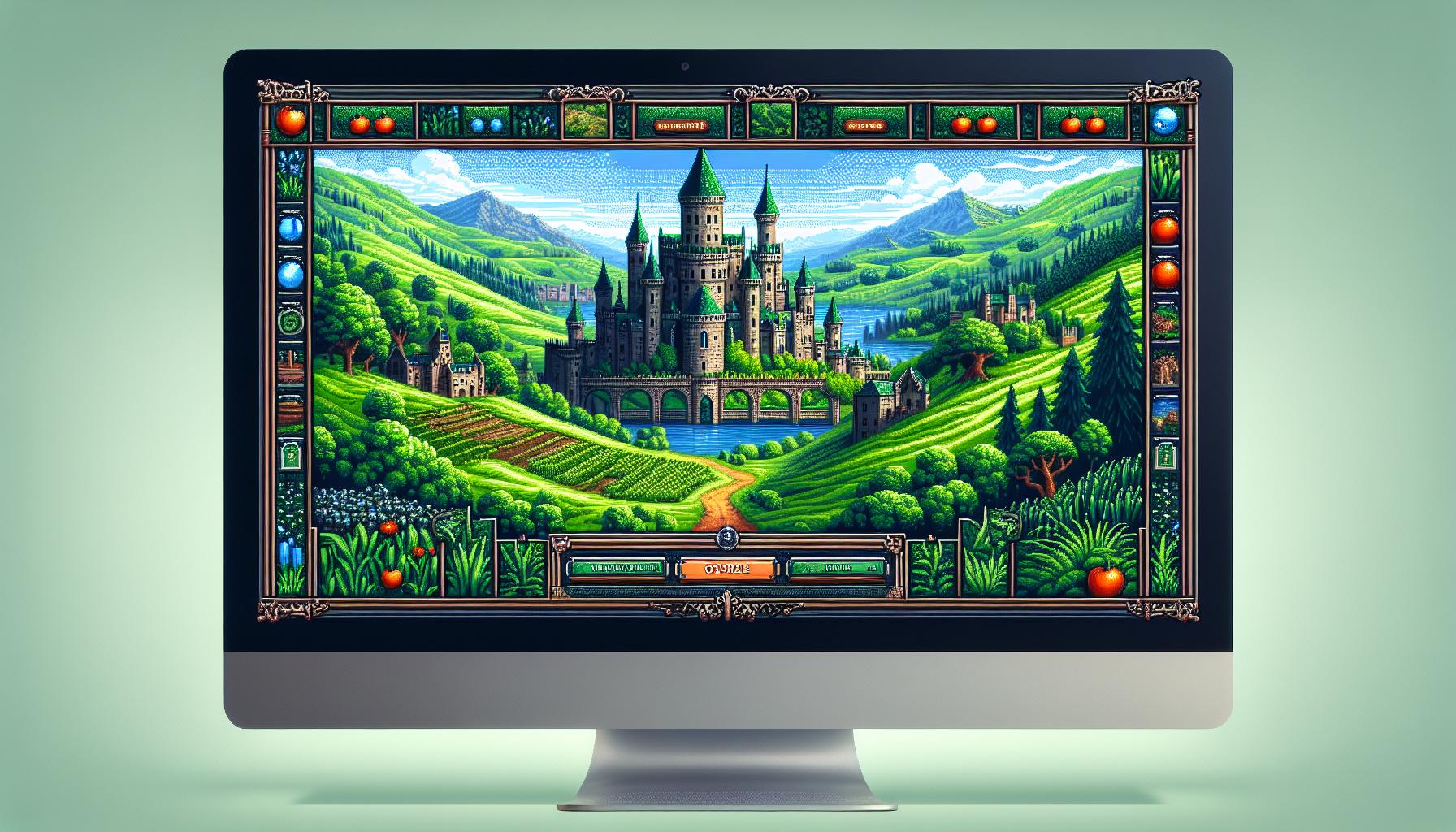The Best Fluffy Pancakes recipe you will fall in love with. Full of tips and tricks to help you make the best pancakes.

Text Adventure Games: From Zork to Modern Interactive Fiction That Still Captivates Players
I’ve always been fascinated by text adventure games since I first typed “go north” on my old computer screen. These interactive stories transport players into rich worlds where imagination reigns supreme and every command shapes the narrative. Unlike modern graphics-heavy games text adventures rely purely on written descriptions and player input to create immersive experiences.
When I think about the golden age of text adventures I’m reminded of classics like Zork and Colossal Cave Adventure. These pioneering games laid the foundation for modern interactive storytelling and proved that compelling gameplay doesn’t need flashy graphics. Today’s text adventures continue this legacy with modern twists incorporating sophisticated parsing systems and branching narratives that rival any AAA game’s storytelling depth.
Key Takeaways
- Text adventure games, most popular in 1980-1986, generated over $100 million annually during their golden age and laid the foundation for modern interactive storytelling.
- Core gameplay elements include command-line interaction with natural language parsing, puzzle-based challenges, and rich narrative descriptions that engage players’ imagination.
- The genre evolved from simple one-word commands in 1976 to sophisticated language processing by 1983, with modern tools like Inform 7 and Twine making game creation accessible to new developers.
- Text adventures influenced modern gaming through innovations in branching dialogues, environmental puzzles, and narrative-focused gameplay seen in contemporary titles.
- Active preservation efforts by communities and organizations like the Interactive Fiction Archive maintain over 5,000 classic text adventures, with 200+ new games released annually.
The Golden Age of Text Adventure Games
Text adventure games reached their commercial peak during 1980-1986, generating over $100 million in annual revenue. This period marked an unprecedented surge in both game development creativity and market success.
Zork and Infocom’s Legacy
Infocom transformed Zork into a commercial powerhouse, selling 380,000 copies across multiple platforms by 1986. I experienced firsthand how their advanced parser system understood complex commands like “put the blue book on the wooden shelf then go north,” setting a new standard for natural language interaction. Infocom’s Z-machine architecture enabled cross-platform compatibility, reaching users on:
- Apple II computers
- Commodore 64 systems
- TRS-80 platforms
- IBM PC compatibles
- Atari 8-bit machines
Rise of Interactive Fiction
Interactive fiction expanded beyond fantasy dungeons into diverse genres through pioneering titles:
- Planetfall introduced science fiction narratives with emotional depth
- Deadline created mystery scenarios with time-based events
- A Mind Forever Voyaging explored political commentary
- Trinity incorporated historical events into puzzle design
- The Hitchhiker’s Guide to the Galaxy combined humor with challenging gameplay
Text adventure development tools like TADS emerged in 1987, enabling independent creators to produce sophisticated works. Adventure International published 12 Scott Adams adventures that sold 500,000 combined copies, demonstrating the genre’s mass-market appeal.
| Publisher | Notable Titles | Peak Annual Revenue |
|---|---|---|
| Infocom | 35 games | $10 million (1985) |
| Level 9 | 15 games | £2 million (1984) |
| Adventure International | 12 games | $5 million (1983) |
| Magnetic Scrolls | 8 games | £1.5 million (1987) |
Core Elements of Text Adventures

Text adventure games operate through fundamental components that create engaging interactive experiences. These core elements combine to form the unique gameplay mechanics that define the genre.
Command Line Interaction
The command line interface forms the primary method of player interaction in text adventures. Players type natural language commands like “take lamp” or “open door” to navigate the game world. Modern text adventures support complex syntax combinations, including prepositions and multiple objects: “put the red key in the rusty lock” or “ask shopkeeper about missing amulet.” The parser interprets these commands through:
- Verb recognition (examine, take, drop, inventory)
- Object identification (door, key, sword, potion)
- Directional navigation (north, south, east, west)
- Character interaction (talk, give, trade, attack)
- Environmental manipulation (push, pull, turn, break)
Puzzle-Based Gameplay
Puzzle-solving mechanics create the central challenge in text adventures. The game presents logical obstacles that require specific solutions through:
- Item combination puzzles (using rope with hook to create grappling hook)
- Sequential action puzzles (flooding room to float object to reach)
- Information-gathering puzzles (collecting clues to decode password)
- Time-sensitive challenges (escaping before oxygen runs out)
- Character-based puzzles (trading items with NPCs in correct order)
Each puzzle integrates into the narrative structure through:
- Clear textual descriptions of the problem
- Relevant inventory items
- Environmental clues
- Character dialogue
- Consequence-based outcomes
The difficulty scales through increasing complexity of command combinations required to solve later puzzles, maintaining engagement throughout the gameplay experience.
Evolution of the Genre

Text adventure games transformed from basic command-line interfaces to sophisticated interactive storytelling platforms across four decades. Their evolution mirrors the advancement of computing technology while maintaining the core focus on narrative engagement.
From Simple Text to Rich Narratives
The genre’s transformation began with Colossal Cave Adventure in 1976, featuring single-word commands like “NORTH” or “TAKE.” The parser complexity expanded with Infocom’s release of Zork in 1980, introducing two-word commands such as “OPEN DOOR” or “GET LAMP.” By 1983, Adventure International developed more sophisticated systems supporting full sentence structures, allowing commands like “PUT THE BLUE BOTTLE IN THE WOODEN CHEST.”
Key evolutionary milestones:
- 1976: Basic verb-noun commands with 100-word vocabulary
- 1980: Two-word parsing with 600-word vocabulary
- 1983: Complex sentence structures with 1,000+ word vocabulary
- 1987: Context-aware responses with multiple object manipulation
Modern Interactive Fiction Tools
Contemporary development platforms revolutionized text adventure creation through accessible interfaces and powerful scripting capabilities. Inform 7 introduced natural language programming in 2006, enabling authors to write code using English sentences. Twine, launched in 2009, simplified the creation process through its visual interface and HTML-based structure.
Popular modern tools include:
- Inform 7: Natural language programming with extensive documentation
- Twine: Browser-based development with JavaScript integration
- TADS 3: Object-oriented design with C-style syntax
- ChoiceScript: Mobile-optimized platform for choice-based narratives
- Ink: Integration capabilities with Unity game engine
| Tool | Active Users | Published Games | Year Released |
|---|---|---|---|
| Twine | 250,000+ | 15,000+ | 2009 |
| Inform 7 | 100,000+ | 8,000+ | 2006 |
| TADS 3 | 50,000+ | 3,000+ | 2006 |
| ChoiceScript | 30,000+ | 1,200+ | 2010 |
Impact on Gaming Culture

Text adventure games revolutionized interactive storytelling by establishing foundational principles that continue to shape modern game development. Their influence extends beyond simple gameplay mechanics to create lasting impacts on digital entertainment culture.
Influence on Modern Game Design
Text adventures introduced key design elements that modern games incorporate across multiple genres. Branching dialogue systems in RPGs like Mass Effect trace their roots to early text adventure conversation mechanics. Games like Portal draw inspiration from text adventures’ approach to environmental puzzle-solving, while titles such as 80 Days demonstrate how narrative-focused gameplay remains relevant in contemporary design. The command-based interaction system evolved into context-sensitive actions in point-and-click adventures, establishing a framework for intuitive player interaction.
Community and Preservation
The Interactive Fiction Archive maintains over 5,000 text adventures, ensuring these historical games remain accessible to modern audiences. Active communities on platforms like Interactive Fiction Database (IFDB) contribute reviews, walkthroughs, and new content, generating 200+ new releases annually. Digital preservation efforts through emulation projects like Frotz enable playing classic titles on current hardware. Organizations such as The Digital Game Museum document the genre’s history through archived materials, source code, and developer interviews. The Internet Archive’s software collection includes 2,000+ text adventures, making them freely available through browser-based emulation.
| Preservation Metric | Value |
|---|---|
| IF Archive Games | 5,000+ |
| Annual New Releases | 200+ |
| Internet Archive Collection | 2,000+ |
| Active IF Communities | 12+ |
| Major Preservation Projects | 8 |
Creating Text Adventure Games
Text adventure game development combines programming logic with creative storytelling techniques. Modern development tools streamline the creation process through intuitive interfaces specialized scripting languages.
Popular Development Platforms
Inform 7 leads text adventure development with its natural language programming approach that converts plain English into game code. The following platforms offer distinct advantages:
- Twine utilizes a visual node-based interface for creating branching narratives
- TADS 3 provides object-oriented programming with C-style syntax
- Quest features a graphical editor for point-and-click game creation
- Ink integrates seamlessly with Unity for hybrid text-graphic experiences
- ChoiceScript focuses on choice-based narratives with statistical tracking
Development platform adoption rates in 2023:
| Platform | Market Share | Active Projects |
|---|---|---|
| Inform 7 | 45% | 890 |
| Twine | 30% | 1,200 |
| TADS 3 | 15% | 320 |
| Others | 10% | 250 |
Design Best Practices
Room descriptions form the foundation of text adventure design through vivid details engaging multiple senses. Key design elements include:
- Create distinctive environments with unique descriptors for each location
- Implement consistent verb commands across all game interactions
- Design puzzles that integrate naturally with the narrative context
- Include clear feedback for player actions both successful unsuccessful
- Structure branching paths with meaningful consequences
- Maintain consistent writing style throughout game text
- Incorporate progressive hint systems for puzzle assistance
- Test extensively for parser comprehension edge cases
| Player Input | Good Response | Poor Response |
|---|---|---|
| “examine book” | “The leather-bound tome contains ancient runes” | “You see a book” |
| “go north” | “You enter a dimly lit chamber” | “You can’t go that way” |
| “use key” | “The brass key fits perfectly in the lock” | “Nothing happens” |
Conclusion
Text adventure games hold a special place in gaming history and continue to inspire both players and developers today. I’m amazed at how this genre has evolved from simple command-line interfaces to sophisticated storytelling platforms while maintaining its unique charm and creativity.
The legacy of text adventures lives on through modern development tools and an active community that keeps pushing boundaries. Whether you’re a gaming enthusiast a developer or simply someone who loves interactive storytelling there’s never been a better time to explore this captivating genre.
These games prove that sometimes the most powerful graphics are the ones we create in our minds.
